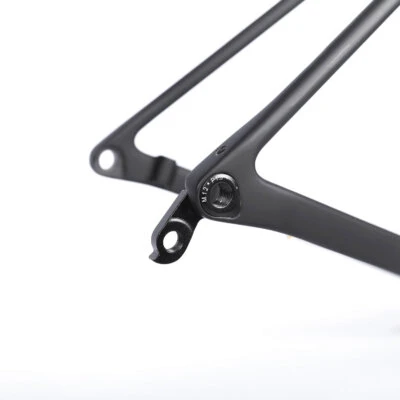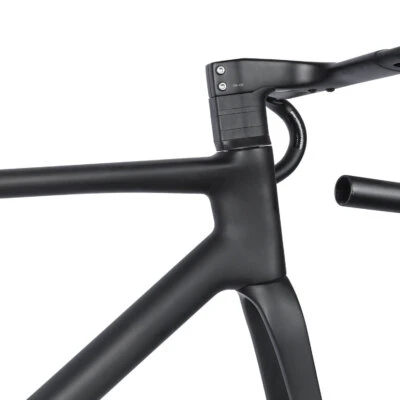ICAN FL1 Carbon Fiber Road Frame – Lightweight Design Meets Aerodynamic Precision
ICAN FL1 Carbon Fiber Road Frame – Lightweight Design Meets Aerodynamic Precision

At ICAN, we’ve engineered the FL1 road frame to deliver what cyclists need: a blend of efficiency, strength, and modern design. Made from Toray T1000 and T800 carbon fiber, it weighs 795g ± 40g—a light yet durable option. Our team controls the whole process, from sketching ideas to shaping the final product, ensuring every detail serves a purpose. Here’s why we designed the FL1 this way, how its weight helps riders, and how its clean look cuts through the air.
Why Weight Matters
A lighter frame makes a difference on the road. It takes less effort to climb hills and speeds up how fast the bike reacts when you push harder. At 795g, the FL1 is one of the lightest road bike frames we make, built to save energy without breaking under pressure. For us, keeping it light is about real results, not just numbers.
How We Shaped the FL1
We used Toray T1000 and T800 carbon because it’s strong and keeps weight down. The 1-1/2″ headset fits today’s parts and steadies the front for better control. The T47 bottom bracket, with its 46mm width, lets us tune the spot where the seat tube, down tube, and chain stays meet. This boosts stiffness where power hits, all while avoiding bulky tubes like some narrower setups need.
The carbon layers are placed to stiffen key spots and flex a bit where it eases the ride, like the back stays. We mold it in one piece at our facility, skipping extra joints to keep it solid and efficient. It’s a straightforward approach that works.
A Design That Slips Through the Air
The FL1’s smooth, one-piece build isn’t just for looks—it helps aerodynamics. With no gaps or seams between tubes, air flows over it cleaner than on pieced-together frames. We route cables inside, hiding them from the wind to cut drag even more. Pair that with disc brake support, and you’ve got a frame that moves fast and stops well, all while staying sleek and functional—one of the lightest road framesets we offer.

What It Does on the Road
This frame climbs with less strain and picks up speed quickly when you need it. The tidy shape helps hold pace on flat stretches too. It’s built for riders who want a bike that keeps up, no matter the terrain.
Our Full Process
We handle the FL1 from start to finish. Our designers draw it up, our researchers test the materials, and our shop builds it to last. Keeping it all in-house means we can adjust and check every step, making sure it’s right before it reaches you.
The FL1 sums up what ICAN does: build frames like this—one of the lightest carbon bike frames we’ve got—using solid engineering and a sharp eye for detail. With its T47 setup and wind-friendly lines, it’s ready for the ride.

















